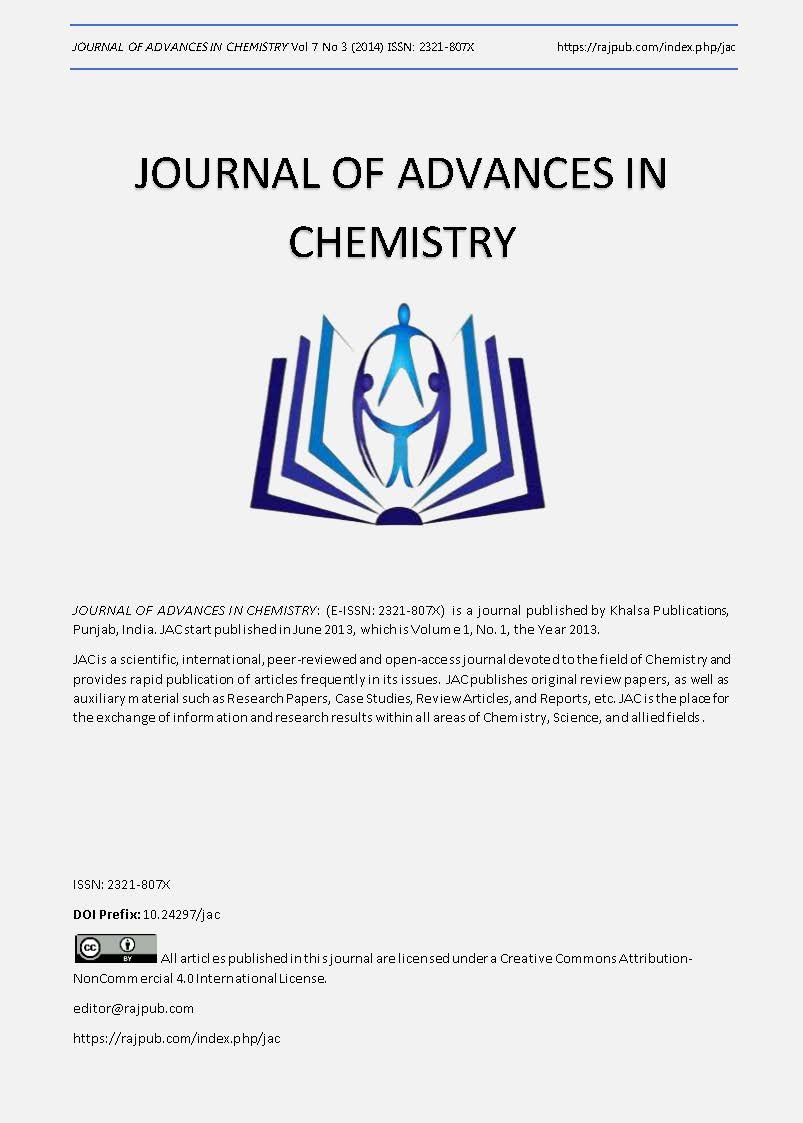Thermal decomposition of cobalt(III), nickel(II), copper(II), palladium(II) and platinum(II) complexes of N-allyl-N'-(4'-methylthiazol)-2ylthiourea
DOI:
https://doi.org/10.24297/jac.v7i3.2381Keywords:
Thiazolylthiourea – Transition metal complexes – Thermal decomposition-Thermogravimetry - kineticsAbstract
Thermal decomposition of Co(III), Cu(II), Ni(II), Pd(II), and Pt(II) complexes of N-allyl-N'-(4'-methylthiazol)-2ylthiourea (AllMeTzTu), HL, have been studied by TG, DTG, and DTA curves. The complexes have the molecular formulae as CoL3.H2O, [Cu(HL)Cl2]0.5H2O and [CuL2(H2O)2] a square for ML2 (M = NiII, PdII and PtII), and [Pd(HL)Cl2]. The TG curves show that the four-coordinate complexes decompose in two stages to yield a free metal  ,with exception  [Pd(HL)Cl2] which gives PdS, as a residue, while the two six-coordinate complexes CoL3.H2O, and [CuL2(H2O)2] decompose in three stages to yield Co and Cu residues. The initial mass losses correspond to elimination of allylamine radical for all complexes in the same temperature range; and with MeTz when the temperature range extended beyond that range of the first stage  for Pd(II) and Pt(II) complexes. Kinetic parameters (E#, n, ΔH#, ΔS#, ΔG#) of the decomposition stages are determined and correlated with bonding and structural properties of the complexes.Â
Downloads
Downloads
Published
How to Cite
Issue
Section
License
 All articles published in Journal of Advances in Linguistics are licensed under a Creative Commons Attribution 4.0 International License.
All articles published in Journal of Advances in Linguistics are licensed under a Creative Commons Attribution 4.0 International License.




